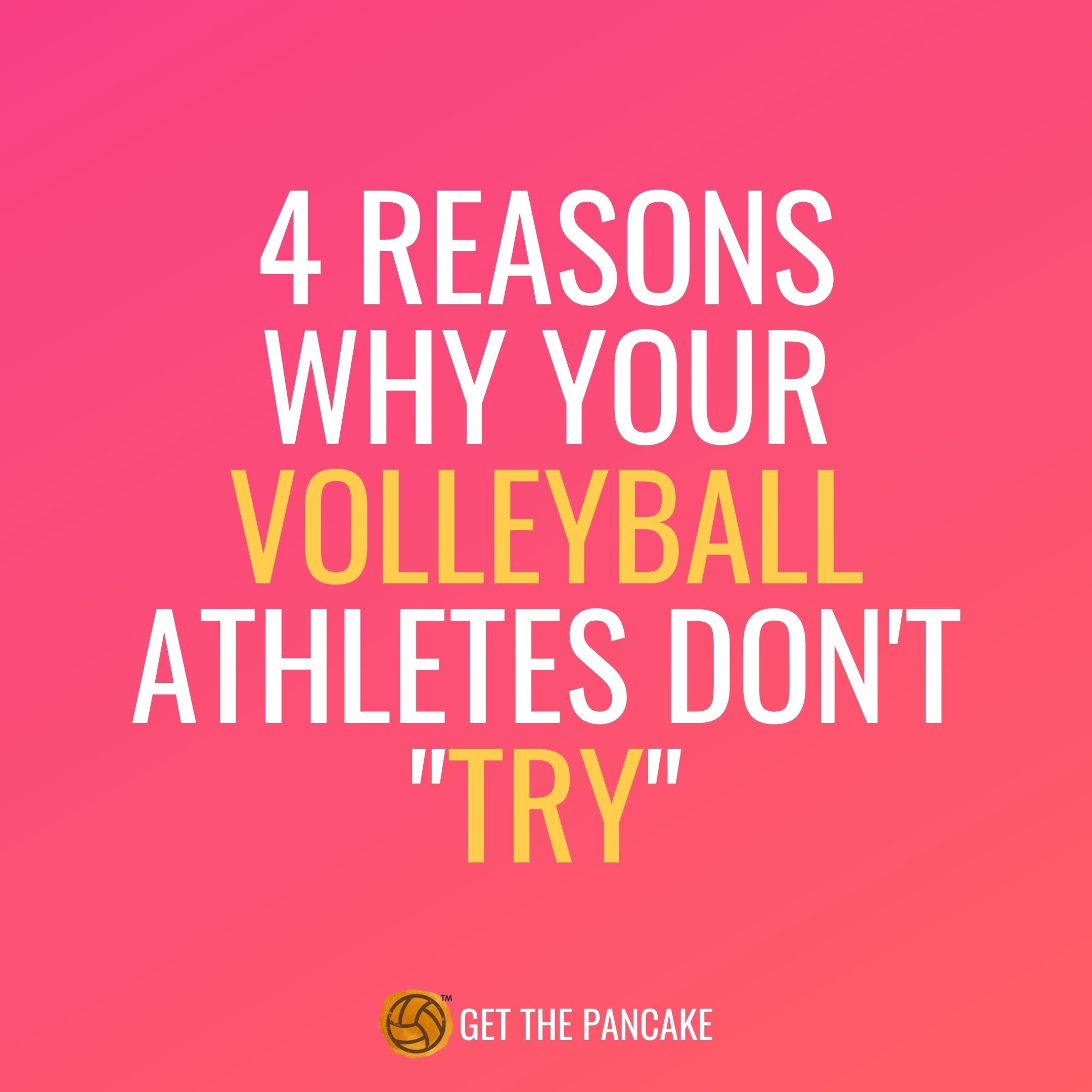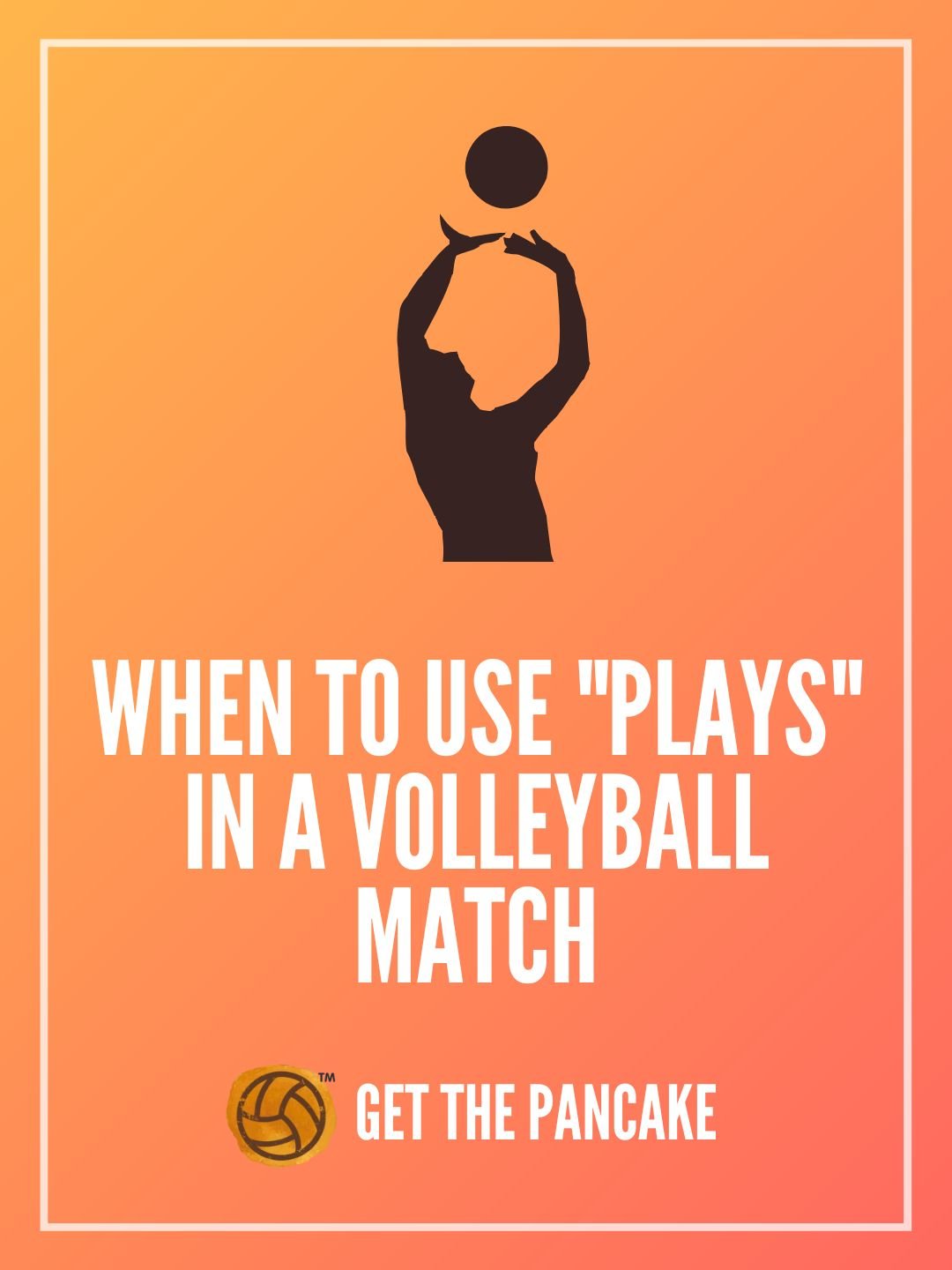4 Reasons Why Your Volleyball Athletes Don't "Try"





I remember when I first started coaching volleyball. I had a lot of energy and excitement and couldn't wait to get on the court with my new team. After a month or so of practices, my excitement quickly turned to frustration and disappointment. It felt like my players weren't putting in the effort to do even the simplest things! They weren't moving to the ball, they weren't calling the ball… it honestly looked like they didn’t care and didn’t want to be at practice! I was beyond frustrated.
Does this sound familiar?
If so, you’re in the right place!
I want to help you understand why it appears that your team isn’t trying, but there’s probably something deeper going on. Read on for four reasons your volleyball athletes might look like they’re not trying.
Why It Looks Like your Volleyball Athletes Aren’t “Trying”
1. They’re New
Allow me to switch sports for a moment. I know nothing about basketball. It doesn't matter that I've watched it on TV or that I've seen plenty of games in person. When it comes to playing basketball, I have no idea what's going on. If you were to put me on the court, I would embarrass myself. My dribbling would look awkward and uncoordinated, my form while shooting would be uncomfortable to watch, and I might very well shoot at the wrong basket. If I’m being honest, even writing out this example I felt self-conscious because as I said, I have no knowledge of the sport!
Now I want you to think of a sport you’re unfamiliar with, put yourself in a practice situation, and picture your coach getting mad at you for not “trying” because you’re not exactly sure what’s going on… frustrating, right!?
Volleyball is a complicated and fast-paced game. Even at the beginner levels, there’s a lot of information for new athletes to take in! But we as coaches sometimes forget that fact. If you have experience playing, you are probably at a point where everything is second nature to you. You can anticipate. You know that after a bad set, a freeball is probably coming over. Why is it so hard for your players to grasp that concept???
They’re reacting to the ball in real-time instead of anticipating, and often don’t understand coverage responsibilities. Even one step to the left might be too much of a movement for a player to consider while they’re trying to take all of the information in.
So what can you do? Be patient. They’re understanding of the sport will come with time. Accusing them of not trying only slows down this process.
2. You’re Doing Too Much At Once
No matter what level your team is at, if you’re throwing too much new information at them at once, it will be difficult for them to execute.
Let’s say it’s one of your first practices with a 12U team and you found a really cool drill online called The Butterfly Drill. A quick summary of this drill is to have players serve across the net to a player who passes to a target, the target then grabs the ball and serves from that side across the net to a passer who passes to a target who then runs back to the original serving line… Honestly, it’s a pretty great warm-up, but there are a lot of moving pieces! It requires a solid foundation in multiple skills and a need for accuracy in order for it to run.
Asking your average 12U team to run this drill (especially towards the beginning of your season) might end up in frustration for both the coaches and the players.
What you can do instead is focus on one skill at a time and progress, that way you’re not confusing your players! Start with some simple serving progressions (like serving to a partner), work on passing progressions (with the ball coming from over the net), and work your way into The Butterfly Drill when you see a high level of control from your players that could keep the drill going.
If they’re not ready for it that day? No worries! Move on to something else and revisit it later in the season.
3. Your Drill Is Too Slow
Yiiiiikes, this is one of the most painful things to see as a coach, and definitely difficult for players to pay attention through. But guess what… We’re all guilty of it!
Look, I get it. Sometimes things need to be slowed down.
However, most of the time there is far more that can be learned during faster paced drills rather than standing around listening (or not) to coach ramble for a few minutes about how to do something or why it’s important… And this is coming from a recovering rambler!
Drills where only one person is performing while the others wait is another culprit. Now… there are drills where this happens, but they can still be fast-paced and beneficial (like in small groups or when there are elements of conditioning involved), but those are few and far between.
Take a look around at your next practice and see how often players are just standing there talking to their teammates. If it’s happening in more than a couple of drills, it’s time to put more effort into planning a faster practice.
Why? When things are slow, players lose interest. It’s very likely that your players aren’t trying if there’s too much standing around. They’re bored. It’s hard to go from 0-60 when you’ve been waiting in line for 2 minutes, only to get one chance at touching the ball.
Additionally, with slower drills, there’s more attention called to mistakes. Players aren’t as willing to make mistakes if the coach is going to point out what they did wrong, or if it slows the drill down even more. Faster drills make mistakes less obvious or important.
4. You Focus On What’s Wrong
Our ideal coaching self teaches our players how to correctly perform skills, tactics, and strategies… but in real life, we tend to focus on pointing out what’s wrong. I’ve caught myself doing this every season, and I’m sure I will continue to do it despite my best efforts.
Something I commonly see and hear from coaches is the classic throwing the arms in the air while asking their entire team “why aren’t we going for the ball!?” or “why aren’t you trying!?”
Again, I’ve been there! Sometimes it can really be a mystery!
But this is NOT helpful or productive coaching.
What we need to focus on instead is when our players do something well, we should give them a ton of specific praise that the entire team can hear.
Examples:
“Taylor, I loved that you called that ball so early, great job!”
“Vanessa, way to move to the ball so quickly, that was excellent!”
“Alanna, way to close that block, your footwork was perfect!”
These practically guarantee an increase in effort from your entire team, and once they hear what gets praised, they know what to focus on. This is much easier than pausing practice yet again to tell them to “focus on their footwork” or yelling at someone to be louder.




